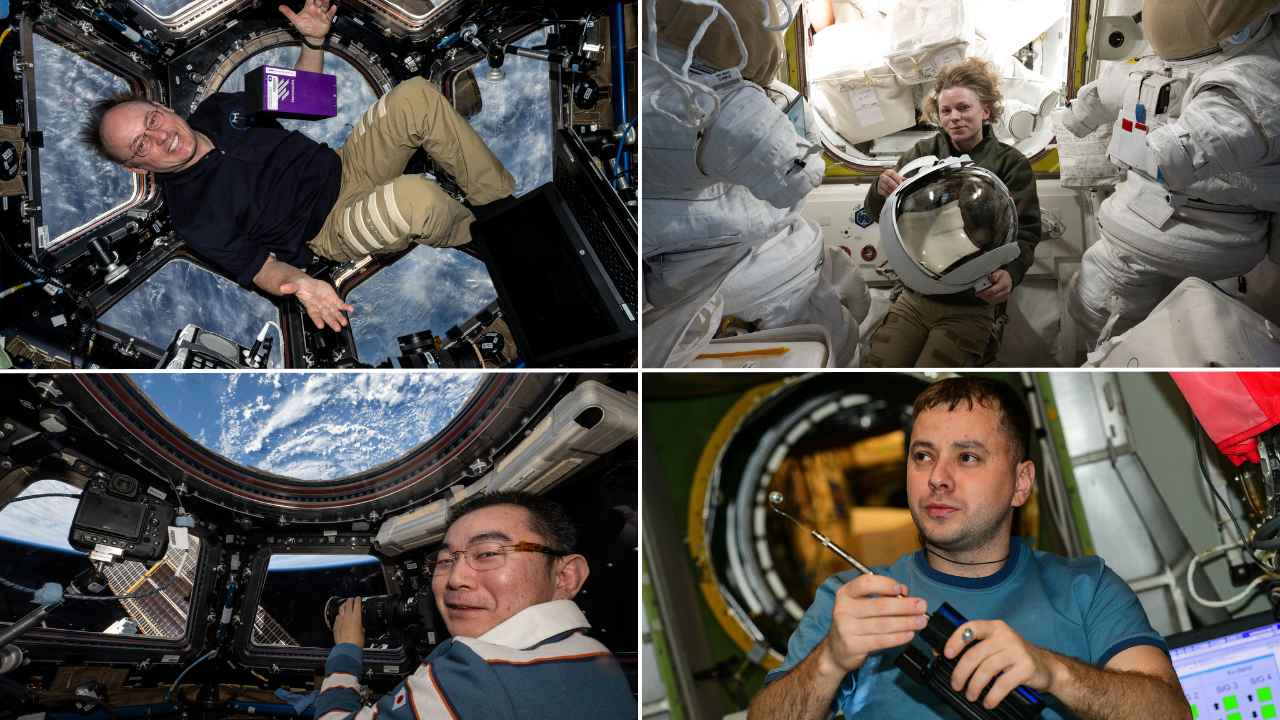Canadian Astronauts Compete in 'Amazing Race' Across Toronto

TORONTO — While watching SpaceX's Dragon cargo spacecraft make a simulated approach to the International Space Station, astronaut Jeremy Hansen muttered: "Don't mess this up, Jeremy; this is our fresh food."
Hansen was at the controls of a robotic arm simulator on the exhibit floor of the International Astronautical Congress, competing in a head-to-head race Tuesday (Sept. 30) against fellow Canadian astronaut David Saint-Jacques.
In the style of the popular television show "The Amazing Race," the two astronauts had to complete physical and mental challenges using clues provided at various space locations. Along with a few Twitter fans, the astronauts raced dozens of miles across Toronto to complete the challenges. [Quiz: The Reality of Life in Orbit]
Hansen had the lead early in the race, leading his blue-shirted team at a sprint up three flights of escalators. Once outside, the group jogged to a small bus and hopped on. A minute later, Saint-Jacques appeared at the head of his yellow-headed posse.
"Go!" came shouts from inside the bus, along with comments about seeing the other team. The driver hesitated. "I'm getting contradictory instructions," he said.
"We're in a race!" came a shout from the back. The driver — carefully obeying the speed limit despite the time crunch — brought the team to the next location, Defence Research and Development Canada (DRDC).
One giant leap for Canada
The aim of the race was partly to publicize the various contractors and organizations that work with the Canadian Space Agency. DRDC, which is a branch of the Department of National Defence, does medical assessments for Canadian astronauts and evaluates noise levels in spacecraft and on the International Space Station.
Breaking space news, the latest updates on rocket launches, skywatching events and more!
At the DRDC, Saint-Jacques and Hansen each faced a course used for the Canadian Load Effects Program (CANLEAP), which is usually employed to evaluate military armor flexibility and weight. Each astronaut crawled through tunnels, climbed up and down several ladders and sets of stairs, dragged a mannequin and even dropped to the ground several times, miming firing guns.
Hansen finished in 3 minutes and 21 seconds, beating his crewmate by just seven seconds despite falling off one of the obstacles. Panting, he received the next clue while Saint-Jacques faced a "roadblock" — a two-minute time penalty.
On the bus, Hansen urged his team to offer any ideas they had on their next stop at York University, where officials used a Light Detection and Ranging (LIDAR) sensor to estimate the heights of Hansen's team.
"Think of me as the funnel. Give me the information and I will consolidate it, and figure out what to do," Hansen said.
Final countdown
The last stop on the tour was the Ontario Science Centre, where the two teams raced to build a "lander" that could operate on the surface of Mars.
The materials on hand were more symbolic than anything else. Coffee cans represented the landers, while the astronauts used ropes to lower their payloads to the surface.
Both teams hit the bulls-eye, so the judges decided to base their decision on the design. They decided Saint-Jacques' pulley was more innovative than the lever Hansen's team used, and declared Saint-Jacques the winner.
The astronauts shook hands and posed for pictures with their teammates, saying they appreciated the opportunity to spend time with CSA partners in Canada since their busy training schedules usually keep them busy at NASA's Johnson Space Center in Houston.
Both Hansen and Saint-Jacques were selected as astronauts in 2009 but have yet to go to space because Canada has a low (2 percent) contribution to the space station. Neither astronaut has been assigned to a flight yet; the earliest possible opportunity will come in 2017.
Follow Elizabeth Howell @howellspace, or Space.com @Spacedotcom. We're also on Facebook and Google+. Original article on Space.com.

Elizabeth Howell (she/her), Ph.D., was a staff writer in the spaceflight channel between 2022 and 2024 specializing in Canadian space news. She was contributing writer for Space.com for 10 years from 2012 to 2024. Elizabeth's reporting includes multiple exclusives with the White House, leading world coverage about a lost-and-found space tomato on the International Space Station, witnessing five human spaceflight launches on two continents, flying parabolic, working inside a spacesuit, and participating in a simulated Mars mission. Her latest book, "Why Am I Taller?" (ECW Press, 2022) is co-written with astronaut Dave Williams.


